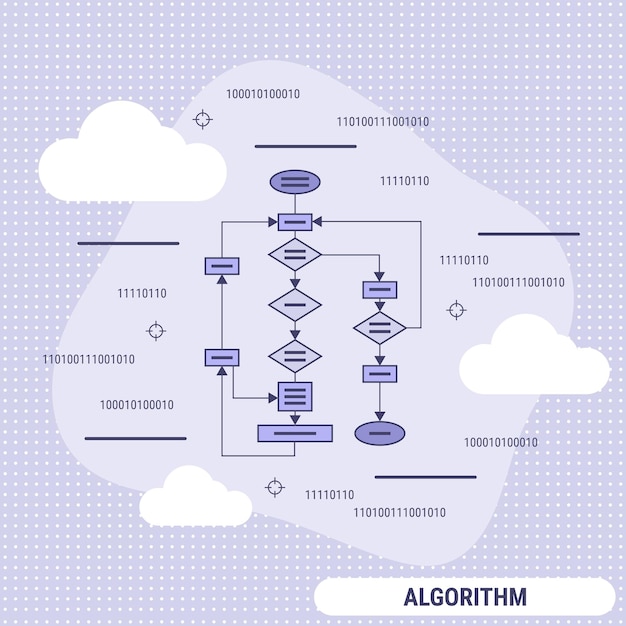Serverless Computing in the Cloud: A Practical Guide for US Developers

Serverless computing allows US developers to build and run applications and services without managing servers, focusing on code and innovation rather than infrastructure maintenance.
Are you a US developer looking to streamline your workflow and focus more on coding and less on server management? Serverless computing in the cloud offers a powerful solution, and this guide will equip you with the knowledge to get started.
Understanding Serverless Computing
Serverless computing is revolutionizing the way applications are developed and deployed. It’s a cloud computing execution model where the cloud provider dynamically manages the allocation of machine resources. Developers don’t need to provision or manage servers to run their code.
Instead, they simply deploy their code, and the cloud provider takes care of the execution environment. This allows developers to focus on writing code and building features, without being burdened by server management tasks.
Key Benefits of Serverless Architecture
Serverless architecture offers numerous advantages for US developers. Let’s explore some of the most significant benefits:
- Reduced Operational Overhead: No need to manage servers, patching, or scaling, freeing up developers to focus on code.
- Cost Efficiency: Pay-as-you-go model means you only pay for the compute time you actually use, optimizing costs.
- Scalability and Flexibility: Automatically scales to handle varying workloads, ensuring optimal performance even during peak times.
- Faster Development Cycles: Simplified deployment process allows for quicker iteration and faster time-to-market.
By embracing serverless, US developers can significantly improve their efficiency and agility, allowing them to deliver innovative solutions faster and more cost-effectively.

Popular Serverless Platforms for US Developers
Several cloud providers offer robust serverless platforms, each with its unique features and benefits. US developers have a range of options to choose from, depending on their specific needs and preferences.
Here’s a look at some of the most popular serverless platforms:
AWS Lambda
AWS Lambda is a leading serverless compute service that lets you run code without provisioning or managing servers. You can trigger Lambda functions from various AWS services, such as S3, DynamoDB, and API Gateway.
Azure Functions
Azure Functions is Microsoft’s serverless compute service, allowing you to run code on demand without managing infrastructure. It supports various programming languages and integrates seamlessly with other Azure services.
Google Cloud Functions
Google Cloud Functions is a serverless execution environment for building and connecting cloud services. It enables you to write and deploy single-purpose, event-driven functions that execute in response to events from Google Cloud Platform and third-party services.
Each of these platforms offers a comprehensive set of tools and services to help US developers build and deploy serverless applications effectively. Choosing the right platform depends on your specific requirements and existing cloud infrastructure.
Use Cases for Serverless Computing
Serverless computing is versatile and can be applied to a wide range of use cases. US developers are leveraging serverless architectures to build innovative solutions across various industries.
Here are some common use cases for serverless computing:
Web Applications
Serverless architectures are ideal for building scalable and cost-effective web applications. You can use serverless functions to handle API requests, process data, and render dynamic content.
Mobile Backends
Serverless provides a scalable and efficient backend for mobile applications. You can use serverless functions to handle user authentication, data synchronization, and push notifications.
Data Processing
Serverless functions can be used to process large datasets in real-time. You can trigger serverless functions in response to data events, such as file uploads or database updates.
- Image and Video Processing: Automate resizing, transcoding, and analysis of multimedia files.
- Real-time Analytics: Process and analyze streaming data from IoT devices or web applications.
- ETL Processes: Extract, transform, and load data between different data sources.
These examples demonstrate the breadth of applications where serverless computing can provide significant benefits, enabling US developers to innovate and solve complex problems more efficiently.

Getting Started with Serverless: A Practical Guide
Embarking on the serverless journey can seem daunting, but with the right approach, US developers can quickly get up to speed. This practical guide provides a step-by-step approach to getting started with serverless computing.
Here’s how you can start your serverless journey:
Choose a Serverless Platform
Start by selecting a serverless platform based on your specific needs and existing cloud infrastructure. Consider factors such as pricing, supported languages, and integration with other services.
Learn the Basics
Familiarize yourself with the fundamental concepts of serverless computing, such as functions, triggers, and event sources. Explore the documentation and tutorials provided by your chosen platform.
Build a Simple Function
Create a simple serverless function that performs a basic task, such as processing data or responding to an API request. This will help you understand the deployment process and the runtime environment.
By following these steps, US developers can gain hands-on experience with serverless computing and start building real-world applications efficiently. Remember to leverage the resources and communities available for support and guidance.
Best Practices for Serverless Development
To maximize the benefits of serverless computing, it’s essential to follow best practices for development and deployment. US developers should adhere to these guidelines to ensure their serverless applications are efficient, scalable, and secure.
Here are some key best practices for serverless development:
Optimize Function Performance
Minimize function execution time by optimizing code and reducing dependencies. Use appropriate memory allocation and avoid unnecessary computations.
Implement Proper Error Handling
Implement robust error handling mechanisms to gracefully handle exceptions and prevent application failures. Use logging and monitoring to track errors and diagnose issues.
Secure Your Functions
Implement security best practices to protect your serverless functions from unauthorized access and malicious attacks. Use proper authentication and authorization mechanisms, and follow the principle of least privilege.
By adhering to these best practices, US developers can build secure, scalable, and performant serverless applications that deliver real business value. Continuous learning and experimentation are key to mastering serverless development.
The Future of Serverless Computing
Serverless computing is rapidly evolving, and its future looks bright. US developers can expect even more innovation and advancements in this space, further transforming the way applications are built and deployed.
Here’s a glimpse into the future of serverless computing:
Increased Adoption
Serverless computing is expected to gain widespread adoption across various industries, as more organizations recognize its benefits and potential.
Enhanced Tooling
Cloud providers and third-party vendors will continue to develop enhanced tooling and services to simplify serverless development and deployment.
Edge Computing Integration
Serverless computing will increasingly be integrated with edge computing, enabling developers to build applications that run closer to the end-users and devices.
As serverless computing continues to mature, US developers who embrace this technology will be well-positioned to lead the way in building innovative and impactful applications. Staying informed and adapting to the latest trends will be crucial for success.
| Key Point | Brief Description |
|---|---|
| 🚀 Reduced Overhead | No server management, focus on coding. |
| 💰 Cost Efficiency | Pay-as-you-go pricing model. |
| ⚙️ Scalability | Automatic scaling for peak loads. |
| 🌐 Web Apps | Ideal for scalable web applications. |
Frequently Asked Questions
▼
Serverless computing allows developers to run code without managing servers. The cloud provider handles infrastructure, enabling focus on coding and innovation.
▼
Key benefits include reduced operational costs, automatic scaling, and faster development cycles. It enables developers to concentrate on building features, not managing servers.
▼
Popular serverless platforms include AWS Lambda, Azure Functions, and Google Cloud Functions. Each offers tools and services for building and deploying serverless applications.
▼
Start by choosing a platform, learning the basics, and building a simple function. This hands-on experience will help you understand the deployment process and runtime environment.
▼
Optimize function performance, implement proper error handling, and secure your functions. These practices ensure efficient, scalable, and secure serverless applications delivering real value.
Conclusion
Serverless computing empowers US developers to create and deploy applications with unprecedented agility and efficiency. By embracing this technology and following best practices, developers can unlock new levels of innovation and drive impactful business outcomes.





